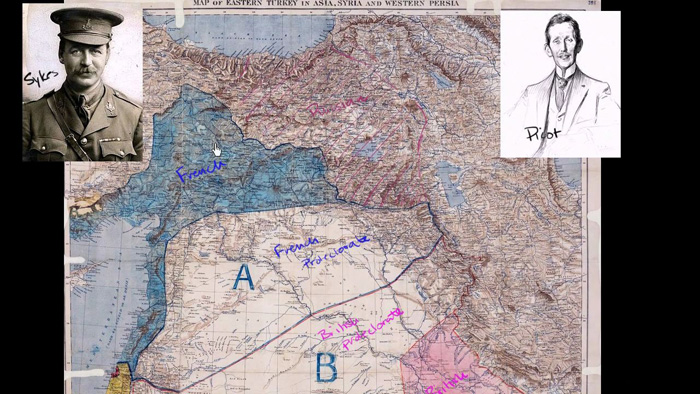RICHARD N. HAASS
This month marks the centenary of the Sykes-Picot Agreement, the secret British-French accord that launched a decade-long series of adjustments to the borders of the post-Ottoman Middle East. Most commentary on the anniversary has been negative, suggesting that the agreement bears considerable blame for the frequency and durability of the region’s conflicts.
That interpretation, however, borders on caricature. Mark Sykes and François Georges-Picot aimed to devise a plan that would enable Great Britain and France to avoid a ruinous rivalry in the Middle East. They largely succeeded: Their design kept the region from coming between the two European powers, and it managed to survive for a century.
To be sure, many of the Sykes-Picot borders reflected deals cut in Europe rather than local demographic or historical realities. But that hardly makes the Middle East unique: Most borders around the world owe their legacy less to thoughtful design or popular choice than to some mixture of violence, ambition, geography, and chance.
The unpleasant reality is that today’s Middle East is what it is because its people and leaders have done such a bad job in shaping it. Sykes and Picot cannot be blamed for the region’s pervasive lack of tolerance and political freedom, poor schools, or the unfair ways in which girls and women are treated. Other parts of the world (including those without enormous reserves of oil and gas) have emerged from colonialism in much better shape.
The factors accounting for the record of failure in the Middle East – history, culture, religion, and personalities – are worthy of serious examination. But the more pressing question that this anniversary raises has less to do with historical analysis than it does with current policy.
In much of the Middle East, a violent struggle for mastery is the new normal. In four – arguably five – countries in the region, the government does not control significant portions of the state’s territory. Lebanon has been in this condition for decades, Iraq for more than a decade, and Syria, Libya, and Yemen for some five years now. Militias, terrorist organizations, foreign fighters, and other armed groups have asserted varying degrees of local authority.
There are also the unfulfilled national aspirations of the Kurds (large numbers of whom live in Turkey, Iraq, Syria, and Iran) and the unresolved matter of how to reconcile the reality of Israel with the Palestinians’ political goals. The border between Syria and Iraq is for all intents and purposes gone. Millions of men, women, and children find themselves living in a country that is not their own.
What, then, should be done? One option would be to try to preserve – or, more accurately, restore – the Sykes-Picot Middle East. But attempting to reunify the countries that appear on the map – and to make the borders between them matter – would be folly. These countries will not go back to what they were; ties to region, religion, tribe, ethnicity, and/or ideology have in many cases superseded national identities.
A second option would be to try to negotiate the terms of a new Middle East, a successor to Sykes-Picot. This, too, would prove to be an expensive failure. Redrawing the map might be possible one day, but that day is decades away, at best. There is simply no consensus on what the map should look like, and no party or alliance that could impose or uphold it. As a rule of thumb, diplomacy can be expected only to work with facts on the ground, not to create them, and the facts on the ground stand in the way of a regional settlement.
All of this leads to a third option: Acceptance of the fact that for the foreseeable future the Middle East will not resemble what appears on maps and globes. This is not an argument for remaining aloof; as bad as things are, they can always get worse. To see that they do not, governments and organizations that meet certain standards can and should be strengthened; those that do not can and should be weakened.
But no level of effort will alter the region’s basic reality: borders that count for little and governments that count for only a little more. Syria, Iraq, and Libya are likely to be countries in name only; important parts of each will essentially be autonomous and on their own, for better or worse. The fact that Turkey, Iran, Saudi Arabia, Israel, Russia, and the United States are working at cross-purposes more often than not further suggests a messy future without legal foundation.
In some ways, the pre-Sykes-Picot Middle East is coming back – but without the order imposed by the Ottoman Empire. As a result, the Middle East stands to suffer far worse in the next century than it did in the last – a reality that could well leave us nostalgic for the times of Sykes and Picot.
* Richard N. Haass, President of the Council on Foreign Relations.







Comments